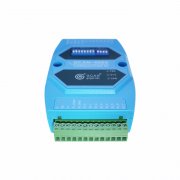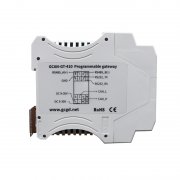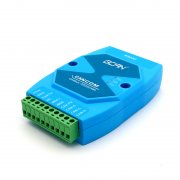Summary and Advantage of CAN Bus Analyser
CAN is the abbreviation of Controller Area Network (hereinafter referred to as CAN), which is the ISO International Standardized Serial Communication protocol. In the automobile industry, a variety of electronic control systems have been developed to meet the requirements of safety, comfort, convenience, low pollution and low cost. Due to the different data types and reliability requirements for communication between these systems, there are many cases of multi-bus structure, and the number of wiring harnesses also increases. In order to meet the needs of "reducing the number of wiring harnesses" and "high-speed communication of large amounts of data through multiple LANs", German Electric Business Bosch Corporation developed a CAN communication protocol for automobiles in 1986. Since then, CAN has been standardized through ISO11898 and ISO11519, and has become the standard protocol of automobile network in Europe.
The high performance and reliability of CAN have been recognized and widely used in industrial automation, ship, medical equipment, industrial equipment and so on. Fieldbus is one of the hotspots of technology development in the field of automation, and it is known as the computer local area network in the field of automation. Its appearance provides strong technical support for distributed control system to realize real-time and reliable data communication among nodes.
AN belongs to the field bus. It is a serial communication network that effectively supports distributed control or real-time control. Compared with many RS-485 distributed control systems based on R-line, the distributed control system based on CAN bus has obvious advantages in the following aspects:

Real-time data communication among network nodes
Firstly, the CAN controller works in a variety of ways. Each node in the network can compete to send data to the bus according to the bus access priority (depending on the message identifier) by means of bit-by-bit arbitration with lossless structure. The CAN protocol abolishes the address coding of the station and replaces it with the coding of the communication data, which makes the difference. Nodes receive the same data at the same time. These characteristics make the data communication between nodes in the network composed of CAN bus more real-time, and easy to form redundant structure, so as to improve the reliability and flexibility of the system. However, RS-485 can only constitute a master-slave structure system, and the communication mode can only be carried out by polling at the master station. The real-time performance and reliability of the system are poor.
Short development cycle
CAN bus is connected with physical bus through CANH and CANL of two output terminals of CAN transceiver interface chip 82C250. The state of CANH terminal can only be high level or suspended state, and that of CANL terminal can only be low level or suspended state. This ensures that there will be no phenomenon in RS-485 network, that is, when the system has errors and multiple nodes send data to the bus at the same time, the bus will be short-circuited and some nodes will be damaged. Moreover, the CAN node has the function of automatically closing the output when the error is serious, so that the operation of other nodes on the bus will not be affected, thus ensuring that the bus will not be in a "deadlock" state because of the problems of individual nodes in the network. Moreover, the perfect communication protocol of CAN can be realized by CAN controller chip and its interface chip, which greatly reduces the difficulty of system development and shortens the development cycle, which is incomparable with RS-485 which only has electrical protocol.
FIELD BUS FORMED INTERNATIONAL STANDARD
In addition, compared with other field buses, CAN bus is a field bus with many characteristics, such as high communication rate, easy implementation, and high cost-effective, which has formed international standards. These are also the important reasons why CAN bus is applied in many fields and has strong market competitiveness.
One of the most promising fieldbus
CAN (Controller Local Area Network) belongs to the category of industrial fieldbus. Compared with the general communication bus, the data communication of CAN bus has outstanding reliability, real-time and flexibility. Because of its good performance and unique design, CAN bus has attracted more and more attention. It is the most widely used in the automotive field. Some famous automotive manufacturers in the world, such as BENZ (Benz), BMW (BMW), PORSCHE (Porsche), ROLLS-ROYCE (Rolls-Royce) and JAGUAR (Jaguar), adopt CAN bus to realize the internal control system of automobiles and the detection and execution agencies. Data communication. At the same time, due to the characteristics of CAN bus itself, its application scope is no longer limited to the automobile industry, but to the automatic control, aerospace, navigation, process industry, machinery industry, textile machinery, agricultural machinery, robots, CNC machine tools, medical devices and sensors and other fields. CAN has become an international standard and has been recognized as one of the most promising fieldbus. The typical application protocols are SAE J1939/ISO11783, CANOpen, CANaerospace, DeviceNet, NMEA 2000.







